Most powerful bombs in the world 2024: Our nature as humans causes us to escalate conflicts into war when things don’t go our way. Hence, People have been driven to make weapons to defend themselves from their adversaries as a result of these wars breaking out. Weapons have evolved throughout history, just like everything else. Unshaped stones and wooden spears are said to have been the first kind of weapons used by humans for self-defense or hunting. Over time, man developed the notion to sharpen the stone and so make it more lethal due to a variety of drawbacks, including short range and inaccuracy. As a result of all the ground-breaking scientific and technical advancements throughout the millennia, man has been able to create nuclear weapons ( bombs) with increasing intelligence and consciousness.
It seems to reason that bombs are more lethal than any other weapon developed to date— they are the world’s most potent weapon. One might conceivably murder millions of people by destroying an entire metropolis, endangering the ecosystem and the lives of future generations as a result of its long-lasting devastating impacts.
Consider the 1945 bombs in Hiroshima, Japan. Ionizing radiation, a powerful shock wave, and a tremendous quantity of heat were all created instantly by the explosion. Furthermore, the injuries and illnesses that followed took a huge toll due to wind-borne radioactive debris high in the atmosphere.
Despite this, studies have proven that there are several categories of explosives similar to the Hiroshima bombing and some that are even more potent. Therefore, they will be discussed in this post as we analyze the Most Powerful Bombs in the World in 2022.
Recommended: Most Technologically Advanced Countries in the World 2024
Top 14 World’s Most Powerful/Dangerous Bombs 2024
1. Tsar Bomba: Tsar Bomba, the RDS-220 hydrogen bomb, is the largest and most lethal thermonuclear bomb ever exploded. It possesses the same amount of explosive force as 3,800 Hiroshima bombs. On October 30, 1961, the Soviet Union detonated it above Novaya Zemlya Island in the Russian Arctic Sea.
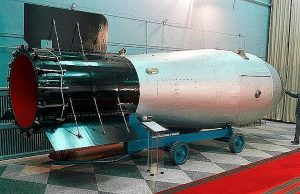
To their dismay, researchers found that the bomb’s shockwaves traveled 560 kilometers, smashing windows in Norway and Finland. Third-degree burns might be caused by the explosion’s heat up to 62 miles distant (100 kilometers). A Tu-95 aircraft dropped the hydrogen bomb into the atmosphere.
2. Soviet Test 119 (1962): An intercontinental ballistic missile (ICBM) was used in Test #219, an atmospheric nuclear test, to deliver the bomb, which detonated 2.3 miles (3.8 kilometers) above sea level. It was the second-most powerful nuclear explosion ever, with a yield of 24,200 kilotons and a 25-mile destructive radius (41km).
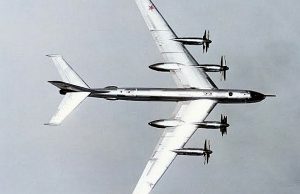
Also see: Countries with the Most Nuclear Weapons
3. Castle Bravo: Nuclear weapon TX-21, popularly referred to as the “Shrimp,” and Castle Bravo. The thermonuclear bomb was a mission that the US conducted at Bikini Atoll on March 1st, 1954. Nuclear rain, a direct product of the explosion, poisoned the islanders when they returned after the catastrophe. The crew of the Japanese fishing vessel Lucky Dragon No. also suffered from poisoning.

Castle Bravo’s bombing capability, expressed in kilotons, was 1,200 times more than the bombs detonated on Hiroshima and Nagasaki.
4. The Little Boy And The Fat Man: On August 6, 1945, an Enola Gay bomber detonated an atomic bomb on the Japanese city of Hiroshima under the code name “Little Boy” (B-29 Super Fortress). Colonel Paul Tibbets of the US Air Force’s 393rd Bomber Squadron piloted the aircraft. It was the first atomic bomb ever to be deployed in combat. It was dropped three days before the second bomb on Nagasaki was dropped. During World War II, the Manhattan Project included the development of this weapon. Uranium 235 nuclear fission is the source of its explosive force.
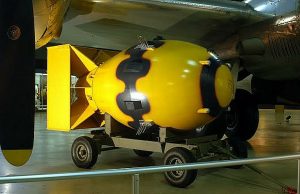
The bombing of Hiroshima was the second nuclear explosion to be created artificially in human history.
Also see: Advantages and Disadvantages of Being an Employee
5. Test 123 (Joe 106): The Soviet Union tested a nuclear weapon on October 23, 1961, and that test was known as Test 123. Compared to the “Tsar Device,” the bomb was detonated one week sooner. The Hiroshima bomb is thought to have been 830 times less powerful than Test 123. In NZ Area C Sukhoy Nos, Novaya Zemlya, the test was carried out. About 12.5 megatons of energy were produced by this weapon.
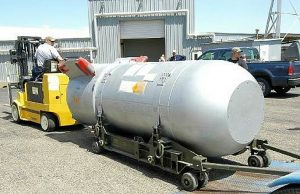
A tiny community used to reside in the region before the test was carried out, according to information included in the article from the Journal Polar Geography published in 1966.
6. Mk-24/B-24: A huge thermonuclear weapon known as the Mk-24, commonly referred to as the B-24 or Mark 24, was created by the American military between 1954 and 1955. About 105 of these devices were built in less than a year and were conceptually based on the Castle Yankee bomb tests.
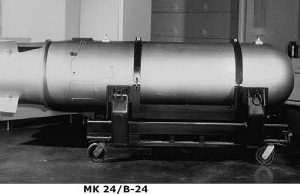
Over 296 inches long and weighing over 42,000 pounds, the bomb itself was enormous. Despite never being formally tested, because of its capacity for destruction, the Mark 24 was given a 64-foot parachute that would delay its fall and give the bomber crews plenty of time to flee the blast zone.
Recommended: Most Complex Movies of All Time
7. The B41 nuclear bomb: Early in the 1960s, the United States developed the B41 Nuclear Bomb, often referred to as the Mk-41, a three-stage thermonuclear weapon. The maximal yield of the weapon was anticipated to produce up to 25 megatons of destructive energy upon explosion, making it among the most potent bombs ever built by Americans.
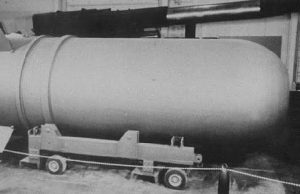
Researchers contend that, although having a lower yield than the most potent bomb on our list, the B-41 was the most effective thermonuclear weapon ever constructed, keeping the best yield-to-weight ratio of any weapon ever made.
8. Aviation Thermobaric Bomb of Increased Power: The Russian-built, bomber-delivered Aviation Thermobaric Bomb of Increased Power (FOAB), often known as the “Father of All Bombs,” is a thermobaric weapon. The “Tu-160″ strategic bomber drops it on the test range; it weighs 7,100 kilos.
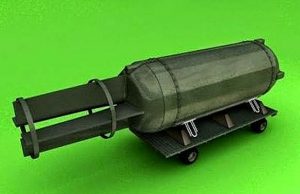
It boasts the world’s strongest vacuum bomb, and testing on that weapon’s effectiveness and power suggests that they are comparable to nuclear weapons. Despite having a lesser tonnage than the American MOAB, the Russian bomb is nonetheless four times as potent.
Recommended: Most powerful country in Asia
9. Ivy Mike (1952): As part of Operation Ivy, the United States dropped the Mike bomb, the world’s first hydrogen bomb, in 1952. Atomic bombs employ nuclear fission to provide explosive energy, whereas hydrogen bombs use nuclear fusion to increase their explosions.
The Ivy Mike test, which weighed 140,000 pounds (63,500 kg), produced a yield of 10,400 kilotons, or the explosive force of 10.4 million tons of TNT. In comparison to Little Boy, the explosion was 700 times more intense.
10. GBU-43/B Massive Ordnance Air Blast (MOAB): MOAB, sometimes known as the “Mother of All Bombs,” is a high-yield bomb designed for use against terrorists and their subterranean training facilities. It is a lethal non-nuclear weapon in the American arsenal designed to destroy subterranean bunkers and facilities. The bomb is intended to be delivered by a C-130 Hercules.
MOAB was the most powerful conventional bomb in the Pentagon’s arsenal, working on the concept of vacuum, and acts on all objects on the ground and underground, with a shock wave and high temperatures.
Recommended: Differences Between Democracy and Autocracy
11. TX-21 “Shrimp” (14.8 Megatons): On March 1, 1954, in Bikini Atoll in the Marshall Islands, the TX-21 nuclear bomb, also referred to as the “Shrimp” thermonuclear bomb, had its maiden test. The huge bomb, housed in a cylinder weighing about 23,500 pounds and reaching over 179.5 inches in length, was initially conceived as a 6 megaton weapon which utilized lithium deuteride to fuel its fission reaction.
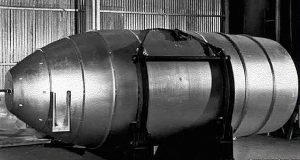
The explosion at Bikini Atoll, which generated over 15 megatons of destructive energy, was roughly three times the expected yield because to mistakes made during its design by Los Alamos National Laboratory, nevertheless. This is nearly 1,000 times more potent than the atomic bombs unleashed on Japan during WWII.
The nuclear bomb generated a 4.5-mile-wide fireball in less than one second (after it was detonated), which was visible from more than 250 miles distant. The typical mushroom cloud (common in nuclear explosions) spread out over a breadth of 7 miles and rose to a height of 47,000 feet in less than a minute. Radioactive waste polluted an area of the Pacific Ocean that was close to 7,000 square miles. The locations most impacted by the falling materials included Rongerik, Utirik, and Rongelap.
Due to the test’s strong winds, radioactive materials were also discovered for many weeks after the explosion in locations as far away as Southeast Asia, Australia, Europe, and the Southwestern United States.In the weeks that followed, unanticipated fallout and radiation caused a worldwide issue as hundreds of people experienced varying degrees of radiation illness, including nausea, diarrhea, hair loss, and skin sores.
12. Mk-17 Nuclear Bomb (10–15 Megatons): The United States military created the Mark 17 nuclear weapon, sometimes known as the Mk-17, in 1954. It was the first in a mass-produced series of hydrogen bombs. The Mk-17 was a very potent weapon with a yield nearing 15 megatons, but it was phased out in 1957 (because to bigger, more effective prototypes under development).

The Mk-17 was renowned for its size and weight, weighing more than 41,500 pounds and reaching more than 7.52 meters (24 feet, 8 inches) in length. Between 1954 and 1955, some 200 Mk-17s were created, along with a number of modified B-36 Bombers specifically created for the Mk-17’s unique requirements.
A 64-foot parachute was also specifically created for this weapon, like many others on this list, to slow the bomb’s descent to earth and give bomber crews time to flee the explosion radius and initial shockwave after detonation. The Mk-17 was phased out in 1957 when smaller (and more portable) bombs were developed in the late 1950s.
A number of Air Force museums around the nation, notably the Castle Air Museum in Atwater, California, and the National Museum of Nuclear Science & History in Albuquerque, New Mexico, now allow visitors to see five of the Mk-17’s casings up close.
Recommended: Richest Sports in the World
13. Mk-36 Nuclear Bomb (10 Megatons): The high-yield thermonuclear weapon known as the Mk-36 nuclear bomb, commonly referred to as the Mark 36, was created in the 1950s. The Mk-36 was regarded as the United States government’s first “dry” nuclear weapon test, employing a multi-stage fusion device similar to the Mk-21.
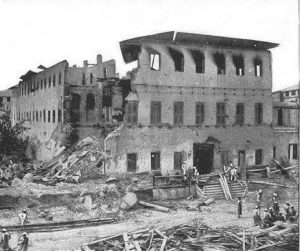
The huge Mk-36, which could explode with a yield of 10 megatons, had a length of almost 150 inches and a weight of around 17,700 pounds. The bomb was intended to be airdropped gently over its target using two separate parachutes, giving the bomber pilots adequate time to avoid any potential danger.
Between 1956 and 1958, the American military produced more than 940 Mk-36 bombs, of which two distinct models, the Y1 and Y2, were created. The Mk-36 was swiftly superseded by the far more potent (and deadly) B41 warheads in 1962, as was the case with the majority of the early nuclear weapons used by the United States.
14. B53 (Mk-53) Nuclear Bomb (9 Megatons): The United States military created the B53, commonly referred to as the Mark 53, a “bunker-buster” thermonuclear weapon in the 1960s. The Cold War-era bunkers built for Soviet officials in the deep earth served as the inspiration for the bomb’s initial design.The bomb was intended to do severe damage to subterranean facilities using a surface blast to collapse the surrounding soil onto its target, providing the United States a decisive advantage in the event of nuclear war.
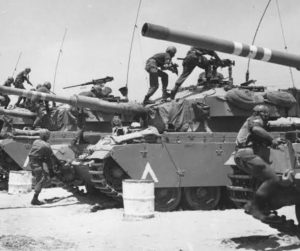
The weapon had a yield of 9 megatons despite being significantly smaller than nuclear bombs from the 1950s (8,850 pounds and slightly over 12-feet in length). A B53 detonation with this yield might demolish any building within a 9-mile radius, with severe burns potentially extending as far as 20 miles.
Researchers estimate that mortality rates within 2.25 miles of the explosion might be close to 90% depending on the topography.In the 1960s, more than 340 B53 bombs were created, with 50 of them being used in the Titan programs to create the W-53 nuclear warhead (based on the B53’s specs). Following several safety issues regarding their security, the remaining B53s were demolished in 2011.
Recommended: How To Backup Whatsapp Without Google Drive
Conclusion
Bombs now outperform all other weapons created to date, namely due to their tremendous destructive force, which can destroy a whole city and a major portion of the population, and radiation from a nuclear assault would last for decades. This kind of weapon has only ever been used twice in history due to its high lethality and potential for destruction. Nations have engaged in negotiations for weapons control accords, but accomplishing this aim has proven to be a very challenging task.

Edeh Samuel Chukwuemeka, ACMC, is a lawyer and a certified mediator/conciliator in Nigeria. He is also a developer with knowledge in various programming languages. Samuel is determined to leverage his skills in technology, SEO, and legal practice to revolutionize the legal profession worldwide by creating web and mobile applications that simplify legal research. Sam is also passionate about educating and providing valuable information to people.